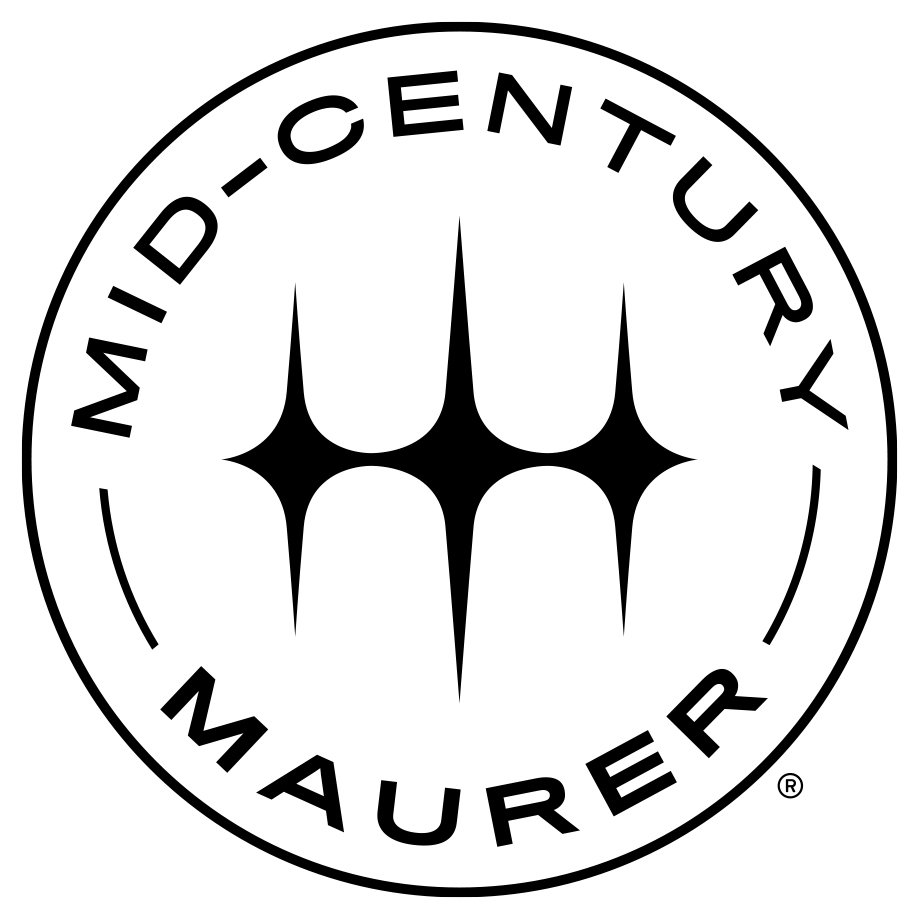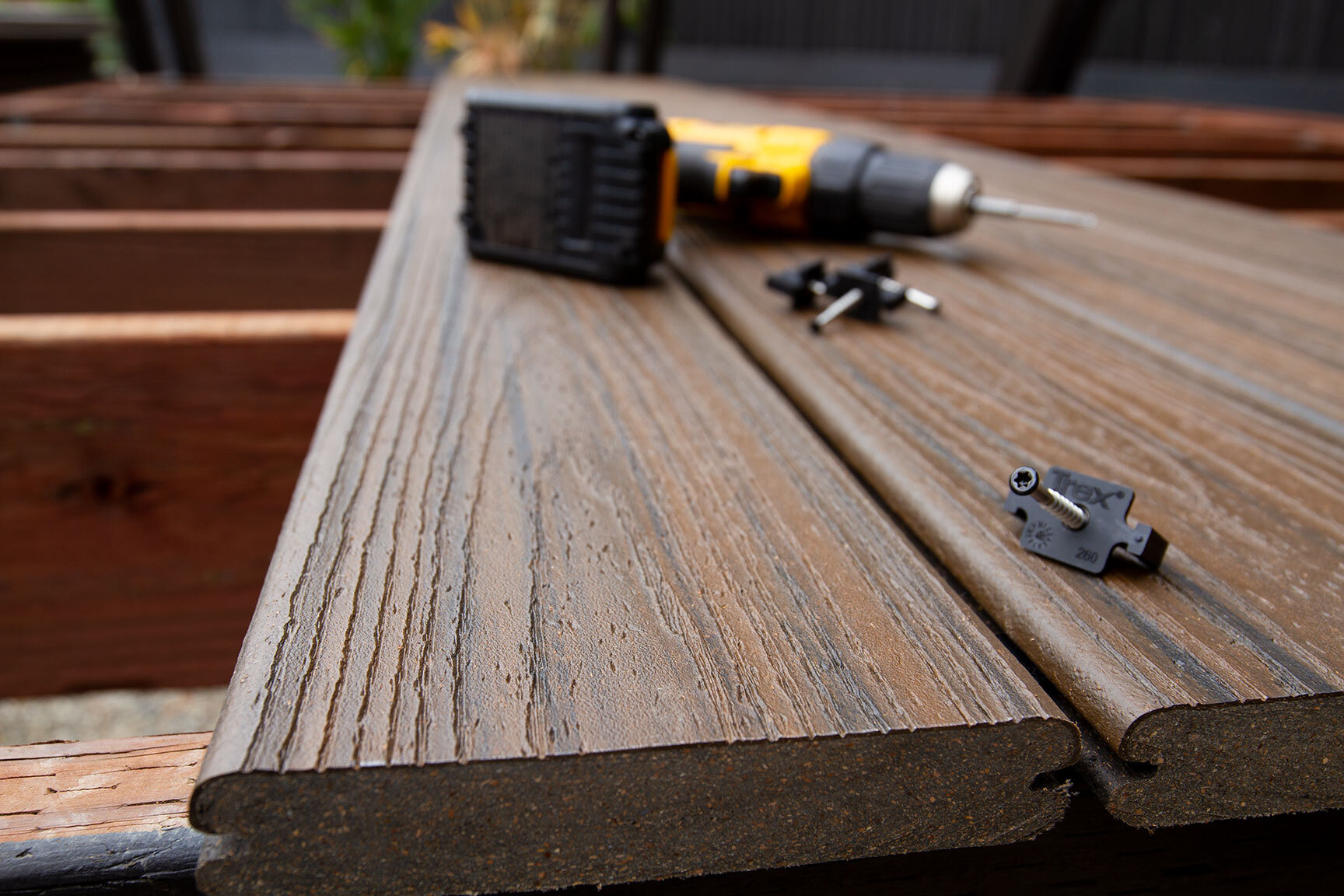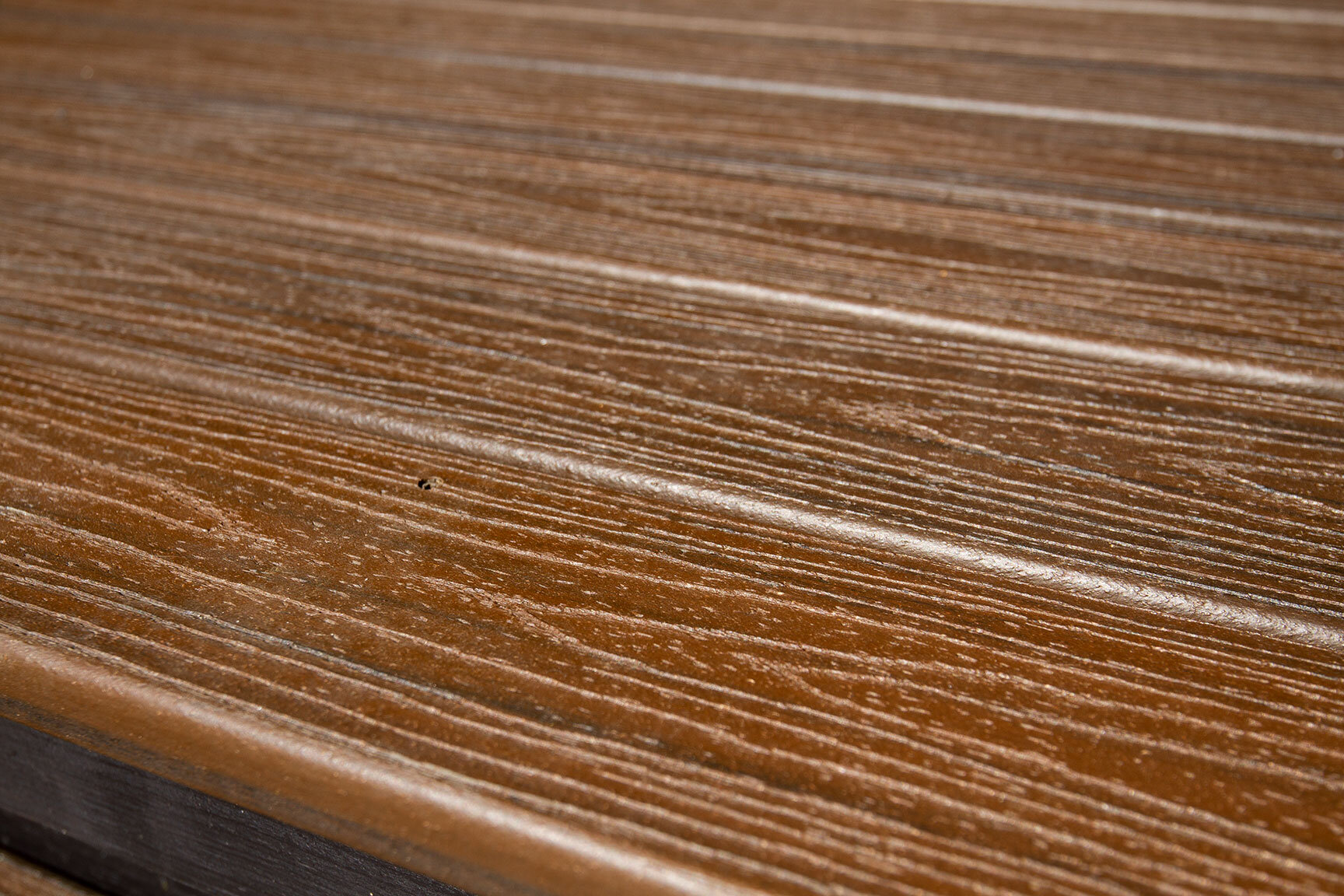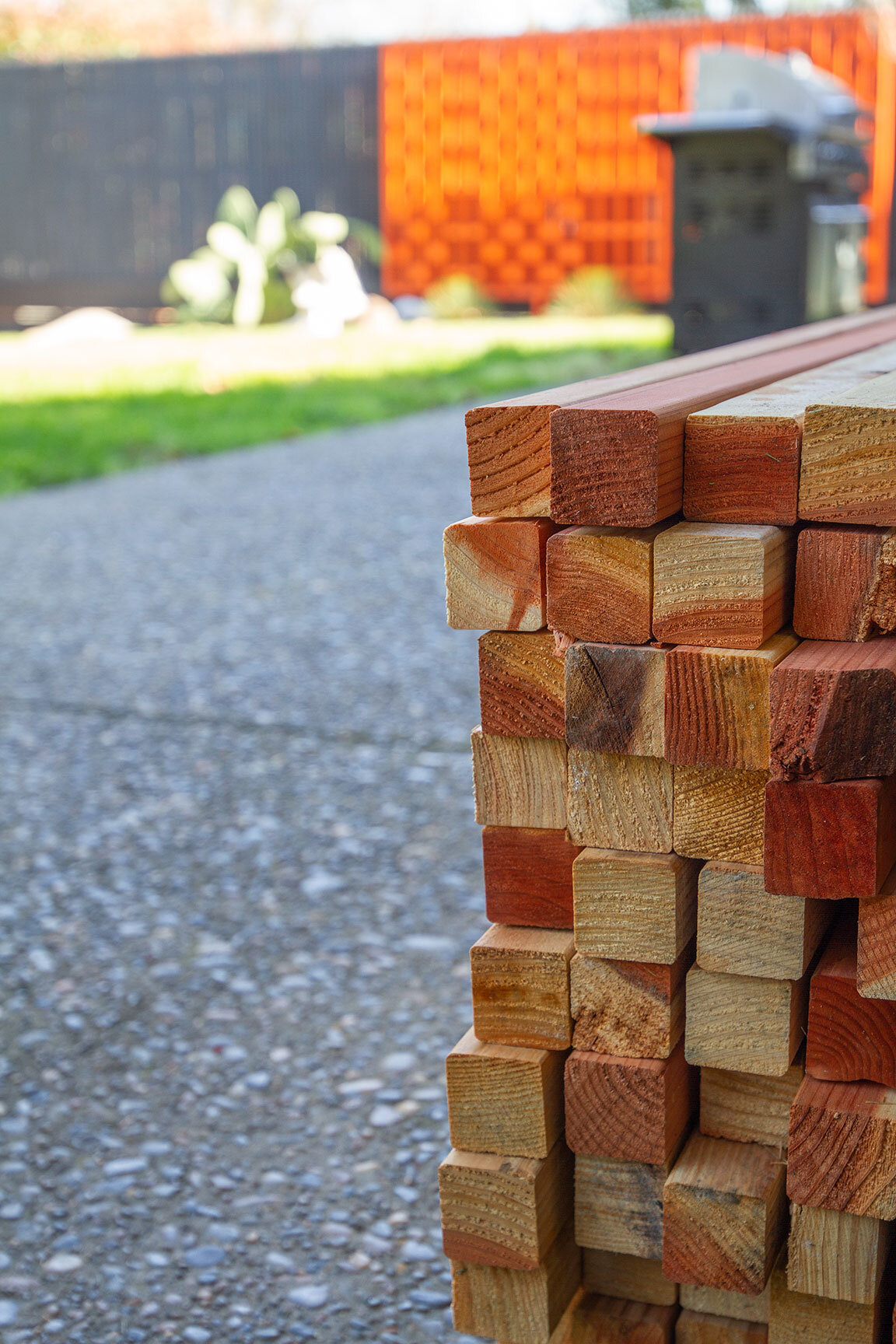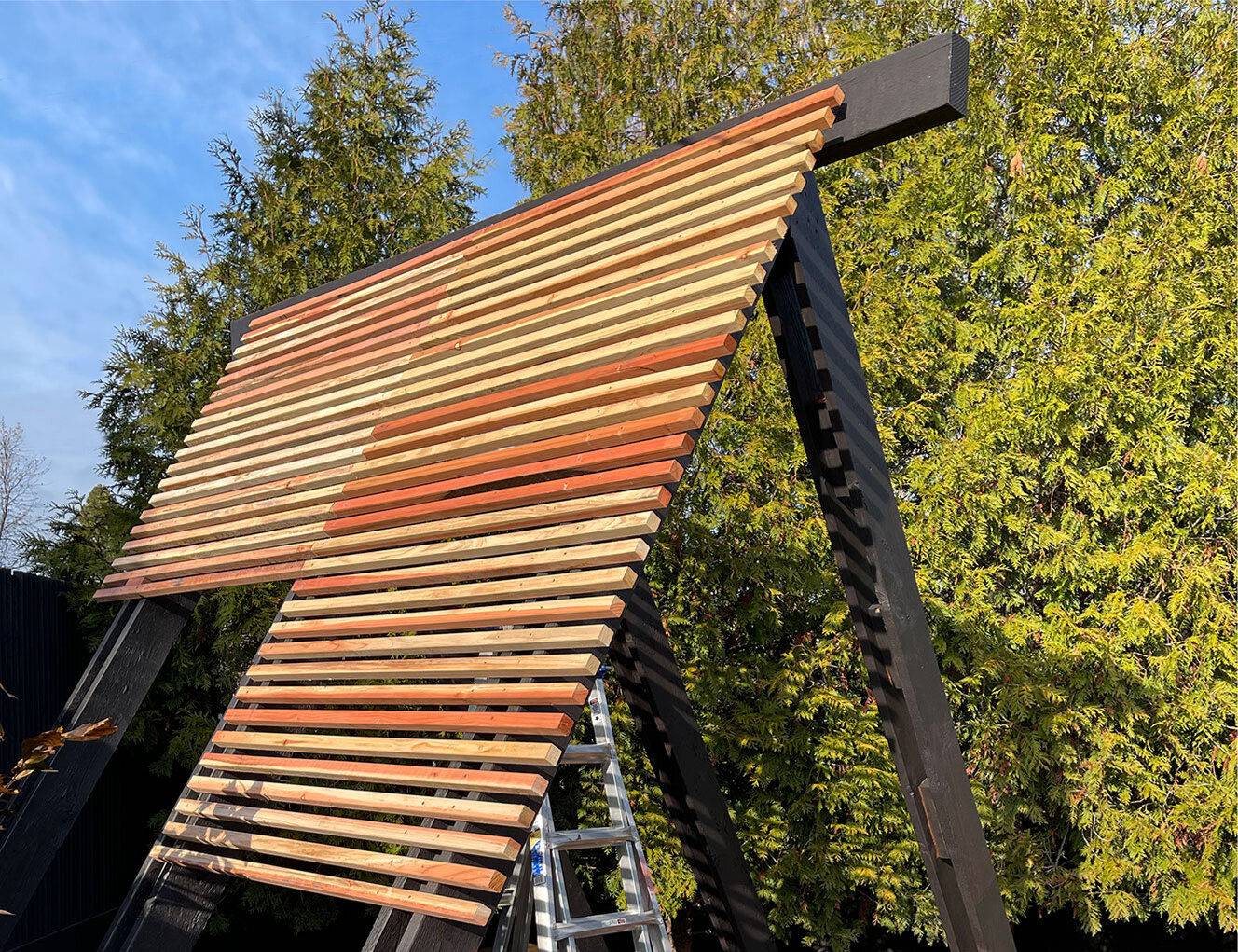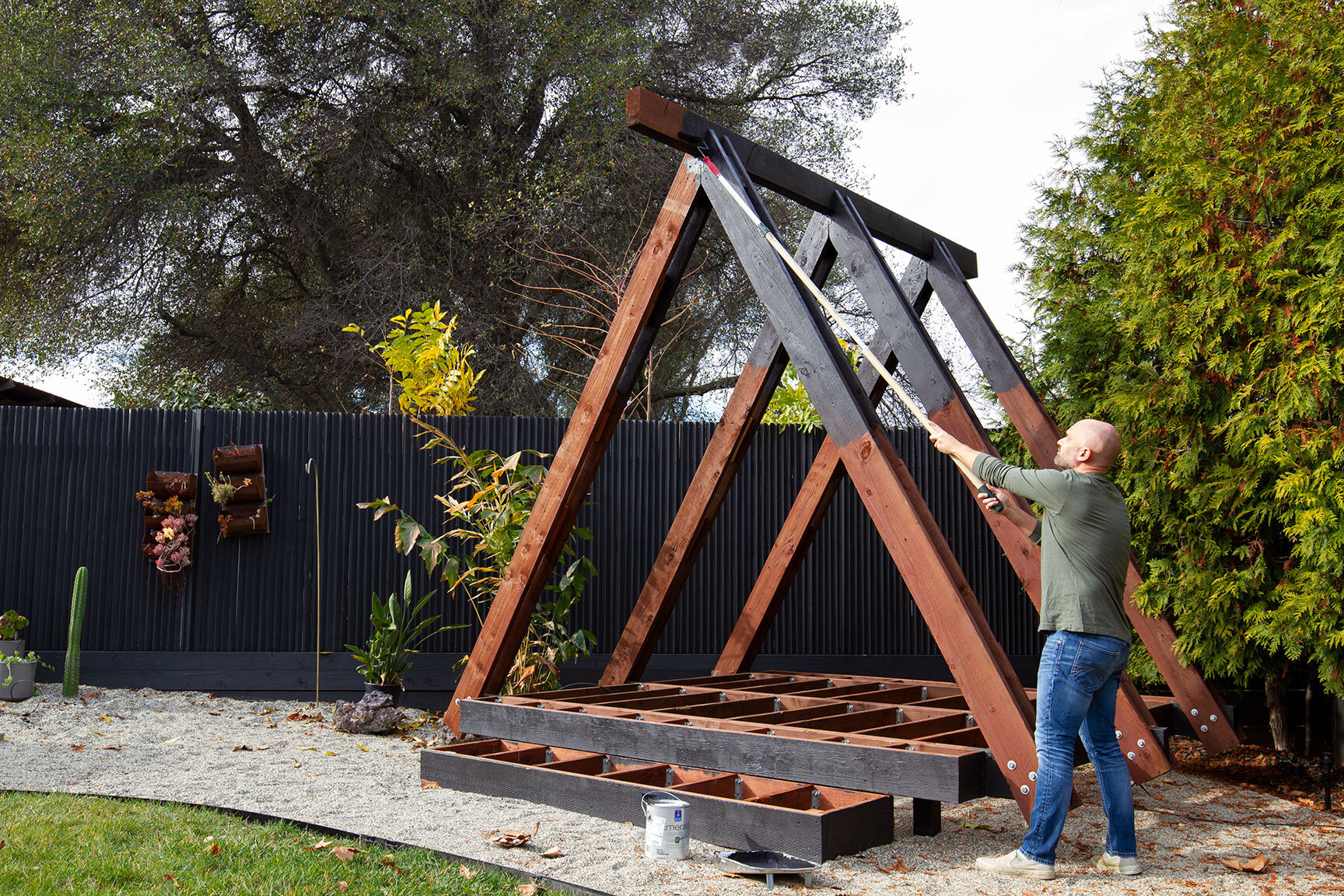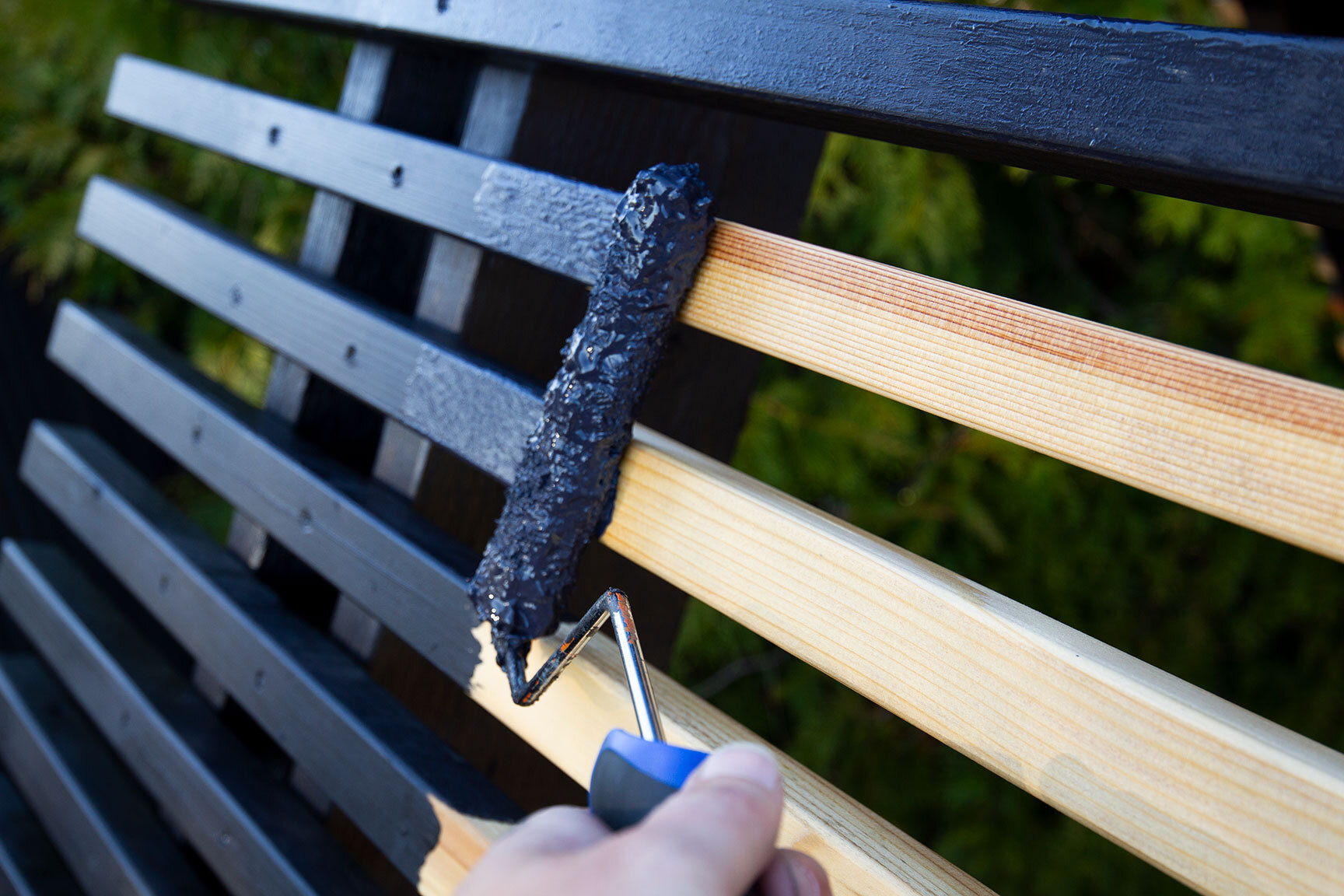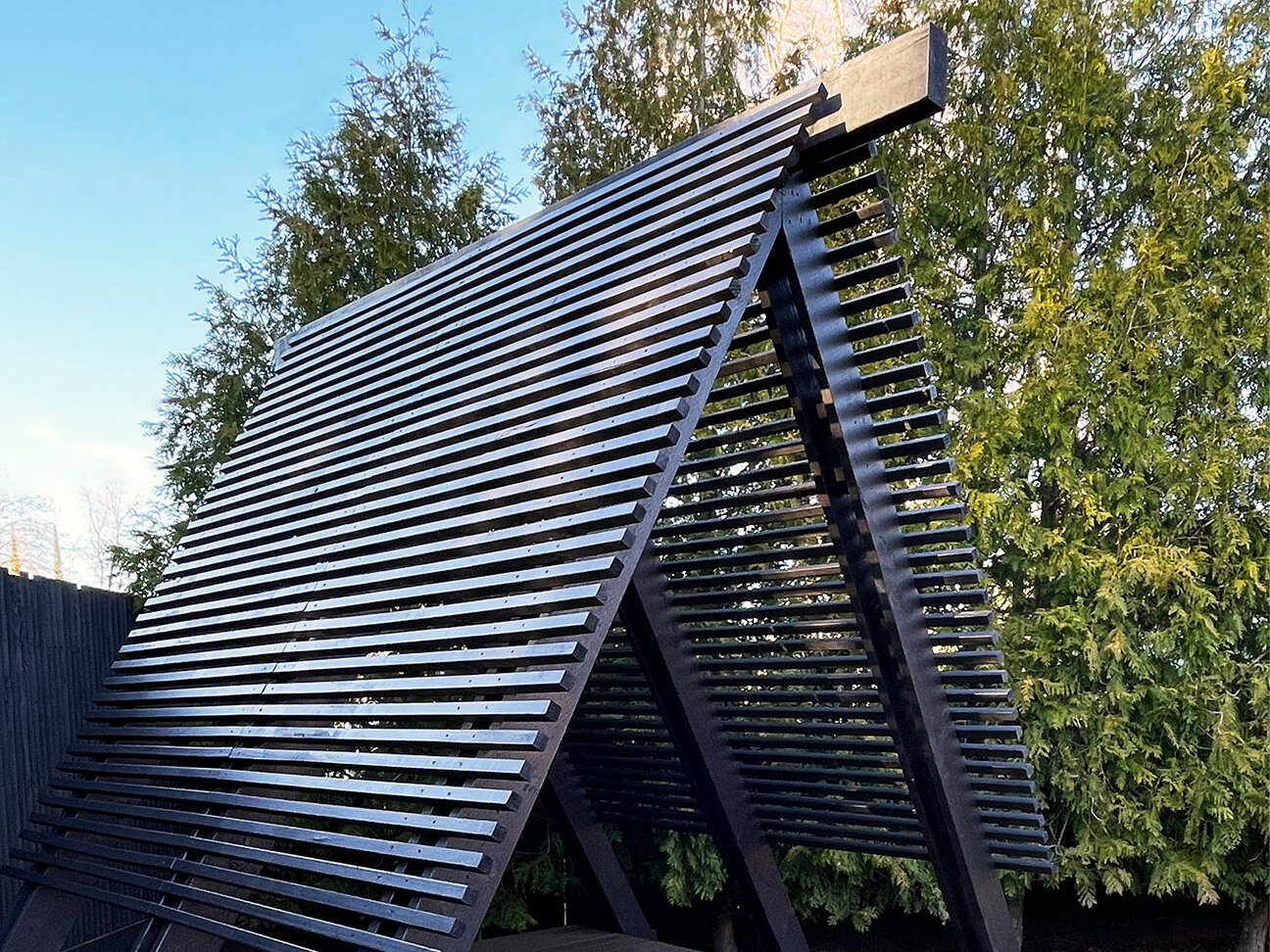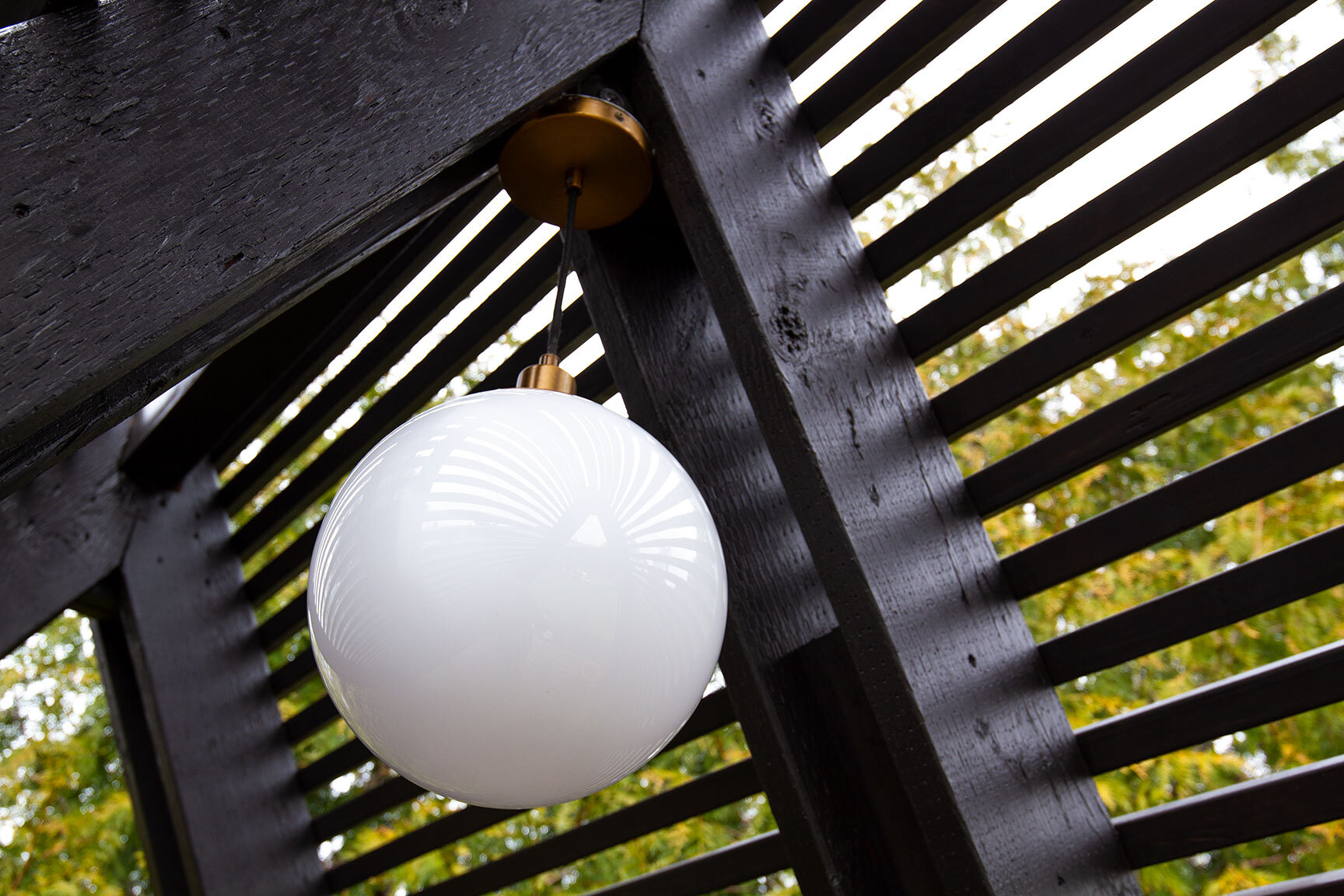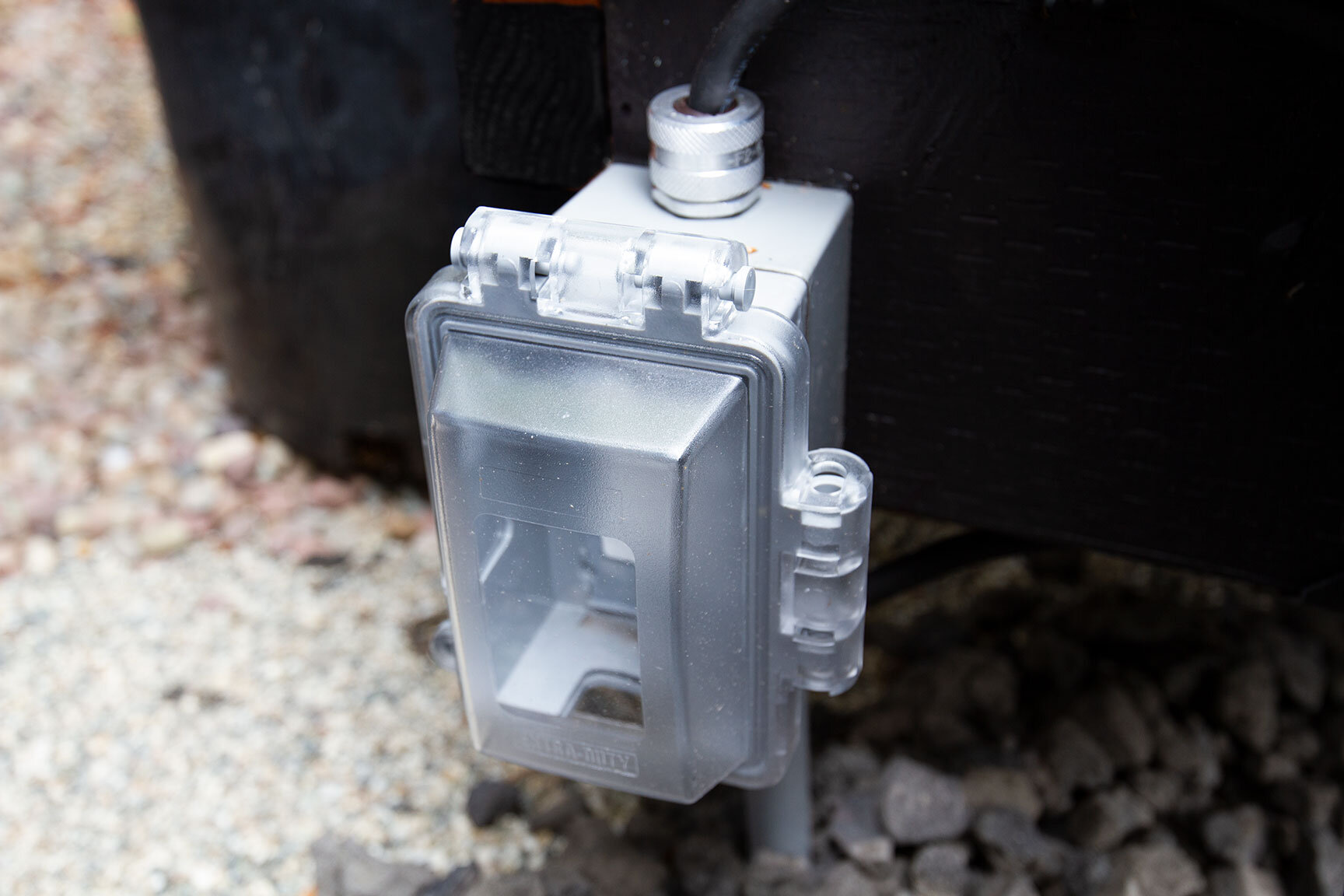House of Happy Talk - Part 2: Dedications

The foundation for The House of Happy Talk has been completed, and it’s time to take a closer look at the elements that give this A-frame form and function. This phase of the project was all about tying together a modernist approach with materials that honor Hawaiian tradition. If you’ve not yet read Part 1 of this series, start there!
Built to Last
From the start of this project, one common theme was to build the hale as solid as possible so it provides many years of enjoyment into the future. So when it came time to think about deck flooring, I was focused on durability and longevity, even if that meant spending a little more up front. While I love the look of a stained wood deck, the idea of maintaining it with stain and sealant regularly makes my head spin.
I’m not typically into composite materials as so many of them appear artificial with their flat, monotone color palettes. However, it was Trex’s Transcend Tropical Line that really impressed me. This premium grade 1x6 decking comes in a variety of true-to-nature colors and patterns for an organic island look. It’s no secret that this Polynesian-inspired hale will be a place to enjoy island drinks, so I was naturally drawn to their Spiced Rum boards. The colors are warm and exotic with a grain and variance that resembles tropical ipe. I also liked that there were fine accents of black throughout each board, which goes along with my plan to paint the structure.
This decking is low-maintenance with easy cleanup, and comes with an outstanding warranty. It will never warp, rot, or splinter, and best of all, it’s made of nearly 100% recycled materials. As I mentioned, this product cost a little more up front, but it was readily available at my local lumber supplier. Composite decking really checked a lot of boxes for me.
“The colors are warm and exotic with a grain variance that resembles tropical ipe.”
The deck boards were ordered in 12-foot lengths, and trimmed to overhang the frame by about 1” on each side. I used grooved boards and hidden fasteners for uniform spacing of each piece. I did find the supplied screws to be a little weak, so I adjusted the torque accordingly on my power drill to avoid over-stressing/breaking the screws as they went into the joists. The ends of the deck and step were finished with a non-grooved flat edge plank for a clean, finished look. Those particular boards had to be attached with countersunk screws through the top.
Protective Coverings
Instead of a traditional thatch roof, we incorporated the same design as the front patio screen to provide shade to the hale. Starting from the top down, I secured a level 2x2 milled redwood slat and used a scrap piece for even 2-inch spacing between the remaining slats. As you can see, they extend beyond the front and back of the A-frame, so it was important to keep those ends flush with one another as I continued down the line. Each stick is attached at 3 points along the frame to prohibit warping as the structure ages. Nearly 150 2x2s make up the sides of the A-frame, creating a blend of both sun and shade all hours of the day.
Once the slats were installed, it was time to apply paint. Some traditional Hawaiian structures were coated with creosote (tar) as a means of preservation. I love the uniform black color from this method, and wanted that honor that method into this modernized structure, too. I went with my practical go-to, Sherwin-Williams Black Magic to mimic the tar look. Their Emerald line of products cease to amaze me, and I will forever be a fan. If you’ve ever worked with this paint, you know that it has a very high, pudding-like viscosity. It’s so thick, in fact, that it wouldn’t quite go through my sprayer. Luckily, I enjoy painting by hand, so it was all mini-rollers and brushes from here to the end. Applying 2 full coats took a couple of days, but the end result is so clean and thorough.
“It was important that the outdoor structure feel connected to the indoors.”
Global Presence
It was important that the outdoor structure feel connected to the indoors. One way of accomplishing this was to install the same kind of globe lamp I have in the kitchen and other areas throughout my home. I snagged the 12” “mid-century” globe fixture on clearance from West Elm several years ago (no longer available, though I wish they’d bring them back), figuring that I would incorporate the light into a future project, so I was happy to finally put it to use.
I find this style of light fixture fits into many design environments, particularly those with modern or Asian aesthetics. In this setting, I used the large white sphere as a focal centerpiece representative of poepoe [poh-ee poh-ee], the full phase of the Hawaiian lunar month.
The fixture is intended for indoor use, so I had my electricians seal the components with silicone caulking to make it weatherproof — a necessary step to get the look I wanted. They even integrated a dimmable switch and remote so I am able to control the light from inside the main house. I also took this opportunity to have a power outlet installed at the base of the deck so guests can get a quick phone charge or I can plug in and blog outdoors. It could also be a good spot to rig up a movie projector or blend a piña colada…just saying.
Happy Times Ahead
Now that The House of Happy Talk is fully constructed, we’re putting our focus on the exciting stage of furnishings, decor, and landscaping. Rock, pavers, vintage furniture, tropical plants, and a few surprises are all straight ahead. There are many things in motion just in time for sunny spring weather, so stay tuned for this exciting journey into part 3. Mahalo for reading along!
